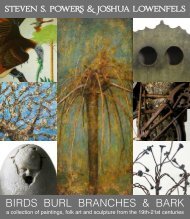INSIDER / OUTSIDER
The definition of Outsider Art is fraught with issues—as online trolls will attest—and, I will not attempt to define it here. However, to further confuse the issue, I will bring forth a few of what I would call “insider/outsider” artists such as Forrest Bess, Frank Overton Colbert, Ida Jones and John Roeder. Individuals that are hard to pigeonhole and overlap with Outsider, Folk, Self-taught, and schooled artists. Can an artist be an “outsider” if you they had some instruction, but have a minority’s perspective? Are all outsider artists self-taught? If they spent time in a mental institution are they automatically an “outsider?” Can one be an “outsider” if they were on the fringe of society, but then thrust into the New York gallery scene and continued to create art that was then for resale? As with most things, a case-by-case examination and identification of context is key to aiding any definition (if one must be so defined). In the following pages, we will present a number of artists and works of art that overlap, transition or fit by context into this insider/outsider scheme. In addition. we will have works by Dilmus Hall, George Morgan, Henry Speller, George Ohr, Eugene Andolsek, Henry Ray Clark and others. January 18-21, 2018. Metropolitan Pavilion, 125 W 18th St, New York, NY 10011
The definition of Outsider Art is fraught with issues—as online trolls will attest—and, I will not attempt to define it here. However, to further confuse the issue, I will bring forth a few of what I would call “insider/outsider” artists such as Forrest Bess, Frank Overton Colbert, Ida Jones and John Roeder. Individuals that are hard to pigeonhole and overlap with Outsider, Folk, Self-taught, and schooled artists.
Can an artist be an “outsider” if you they had some instruction, but have a minority’s perspective? Are all outsider artists self-taught? If they spent time in a mental institution are they automatically an “outsider?” Can one be an “outsider” if they were on the fringe of society, but then thrust into the New York gallery scene and continued to create art that was then for resale? As with most things, a case-by-case examination and identification of context is key to aiding any definition (if one must be so defined).
In the following pages, we will present a number of artists and works of art that overlap, transition or fit by context into this insider/outsider scheme. In addition. we will have works by Dilmus Hall, George Morgan, Henry Speller, George Ohr, Eugene Andolsek, Henry Ray Clark and others.
January 18-21, 2018.
Metropolitan Pavilion, 125 W 18th St, New York, NY 10011
Create successful ePaper yourself
Turn your PDF publications into a flip-book with our unique Google optimized e-Paper software.
You likely have not heard of Frank Overton Colbert, and you don’t have to<br />
pretend like you have. I hadn’t nor had any of my colleagues, but when I saw<br />
the burial image on the previous page, I immediately needed to know<br />
everything about it and who painted it—what I learned was extraordinary.<br />
In 1895, Frank Overton Colbert was born to a distinguished line of Chickasaw<br />
Indian leaders in Riverside, Oklahoma. His father, Holmes Colbert, co-wrote<br />
the Chickasaw Nations constitution and was for a time its delegate to DC. His<br />
prosperous father wished for him to pursue politics, however, Colbert was<br />
bitten by art and in 1916 he pursued a path that lead him to explore the<br />
Southwest and the Pacific coast. In 1917, he enlisted in the navy and worked in<br />
the camouflage department. After being discharged, Colbert moved to<br />
Greenwich Village, NYC to get serious about painting.<br />
Upon his arrival in New York,<br />
the roaring twenties had just<br />
begun and artists, writers, and<br />
musicians flocked to the city,<br />
where it was ripe with avantgarde<br />
energy. Colbert being a<br />
Chickasaw Indian brought an<br />
exotic interest into his cadre of<br />
artist friends and provided<br />
authenticity to the “Inje-Inje”<br />
movement his friend, Holger<br />
Cahill was trying to lift off the<br />
ground—which was aimed to be<br />
a “hell-broth of neoprimitivism.”<br />
This exposure found Colbert<br />
exhibiting a series of “Indian<br />
Folk Lore” paintings with the<br />
Photo of Colbert pointing to his work—the painting herein<br />
is to the lower right. The Evening Star (Washington, DC),<br />
March 19, 1922, p. 70.


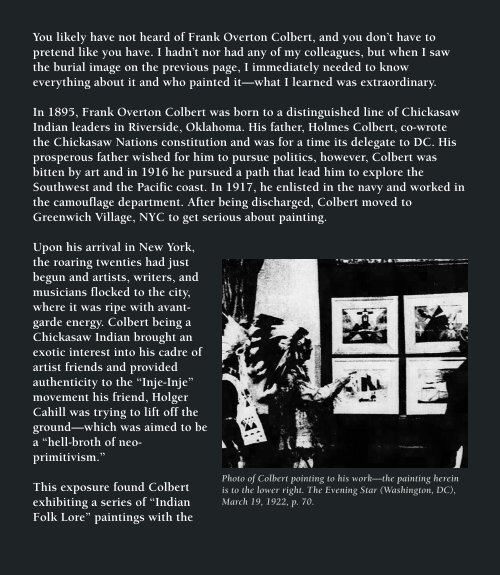

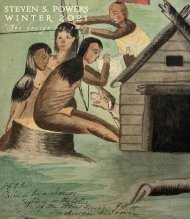
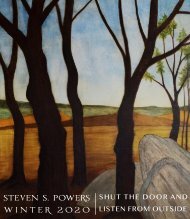
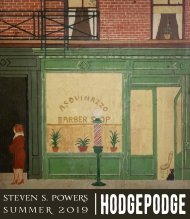
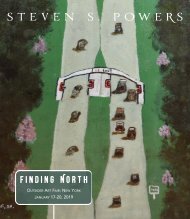

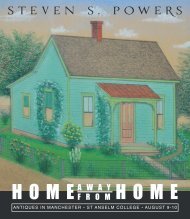
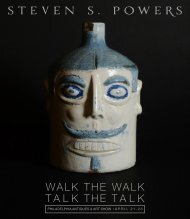
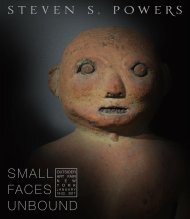
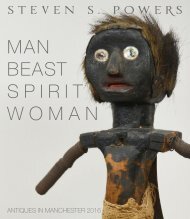
![NEEDLE • KNIFE • TORCH [&] BRUSH](https://img.yumpu.com/55309753/1/190x219/needle-o-knife-o-torch-brush.jpg?quality=85)
